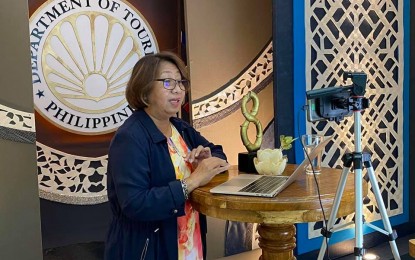[12.16] E. Visayas, 관광 활성화를 위해 세부 여행 프로그램 복제
컨텐츠 정보
- 21,332 조회
본문
TACLOBAN CITY – Eastern Visayas는 내년에 세부의 "Suroy Suroy sa Sugbo"를 복제하여 손님들이 지역의 문화 및 유산 유적지를 방문하고 현지 요리를 맛볼 수 있도록 합니다.
관광부(DOT) 동부 비사야스 지역 국장 Karina Rosa Tiopes는 세부의 관광 담당관과 여행사들이 투어 중에 수행되고 제공되는 것을 정확히 숙지할 수 있도록 몰입할 것이라고 말했습니다.
“우리는 역사와 문화, 예술이 풍부하지만 부각되지는 않습니다. 우리가 유산이라고 말할 때 그것은 구조, 전통, 문화, 음식, 공연, 예술 등 다양한 방식으로 나타납니다.”라고 Tiopes는 금요일 인터뷰에서 말했습니다.
"Suroy Suroy sa Sugbo"는 세부 지방 정부의 대표 관광 프로그램으로, 손님들이 며칠 동안 특정 지역을 여행하여 문화 및 유산 유적지를 방문하고 현지 요리를 맛보는 것입니다.
Suroy는 장소를 돌아다닌다는 현지 용어이고 Sugbo는 세부 시의 고대 이름입니다.
침수 후 DOT는 지역 관광 담당관과 만나 이것이 어떻게 구현될 것인지 논의할 것입니다. 적어도 2개의 마을 또는 도시에서 시범 운영될 것입니다.
이 프로그램은 동부 사마르 지방의 호몬혼 섬에 "페르디난드 마젤란"이 상륙한 것을 포함하여 이 지역에서 일어난 역사적 사건을 강조할 것입니다. 1521년 레이테 남부 리마사와 섬에서 첫 부활절 미사; 연합군과 함께 "더글라스 맥아더" 장군의 귀환은 매년 10월 20일 레이테의 팔로 타운에서 기념됩니다. 동부 사마르의 Balangiga 타운에서 Balangiga Encounter; 1949년 동부 사마르의 구이완 마을에 백인 러시아 난민이 도착했고 레이테 지방에서 제2차 세계 대전이 벌어졌습니다.
관광 프로그램에도 현지 요리가 등장합니다. 레이테에서 인기 있는 현지 음식으로는 바보와 비나골이 있습니다.
Moron은 찹쌀과 코코아를 섞어 바나나 잎으로 감싼 것입니다.
Binagol은 bagol 또는 코코넛 껍질이라는 용어에서 파생됩니다. 바골 안에는 지방 고유의 성형 단 뿌리 작물이 있습니다.
사마르 주에는 일부 마을과 도시에서 가보 요리와 현지 별미를 선보이는 Secret Kitchen이라는 프로그램이 있습니다.
“한 지방자치단체가 가지고 있는 것을 파악하고 다른 지방자치단체와 그것을 칭찬하는 문제일 뿐입니다. A지방자치단체(LGU)가 LGU B와 동일한 관광 경험을 제공하는 것을 원하지 않는다. 클러스터를 할 때 중복이 없도록 하겠다”고 말했다.
일단 구현되면 "Tiopes"는 Suroy Suroy 대신에 이 지역의 프로그램을 "Sudoy Sudoy"(돌아다니는 현지 용어)라고 부르며 동부 비사야 주민들의 이중 언어 특성을 고려할 것이라고 말했습니다. (PNA)
This is the Original Article from PNA NEWS
[12.16] E. Visayas to replicate Cebu travel program to boost tourism
TACLOBAN CITY – Eastern Visayas will replicate Cebu’s “Suroy Suroy sa Sugbo” next year for guests to visit the region’s cultural and heritage sites and taste local cuisines.
Department of Tourism (DOT) Eastern Visayas Regional Director Karina Rosa Tiopes said there will be an immersion for tourism officers and tour operators in Cebu to familiarize what exactly is being done and offered during the tour.
“We are rich in history and culture and arts, but not highlighted. When we say heritage, it is manifested in structures, our traditions, our culture, our food, performances, arts, and in so many various ways,” Tiopes said in an interview on Friday.
“Suroy Suroy sa Sugbo” is a flagship tourism program of the Cebu provincial government wherein guests travel to certain areas for several days to visit cultural and heritage sites and taste the local cuisine.
Suroy is a local term for going around places while Sugbo is the ancient name of Cebu City.
After the immersion, the DOT will meet with local tourism officers to discuss how this will be implemented. It will be piloted in at least two towns or cities.
The program will highlight the historical events that happened in the region including the landing of "Ferdinand Magellan," on Homonhon Island in Eastern Samar province; the first Easter Mass in Limasawa Island, Southern Leyte in 1521; the return of Gen. "Douglas McArthur," with Allied Forces commemorated every Oct. 20 in Palo town, Leyte; the Balangiga Encounter in Balangiga town, Eastern Samar; the arrival of a White Russian refugee in Guiuan town, Eastern Samar in 1949, and World War 2 engagement in Leyte province.
Local cuisine will be featured as well in the tourism program. Popular local foods in Leyte include the moron and binagol.
Moron is a mix of sticky rice and cocoa wrapped in banana leaves.
Binagol is derived from the term bagol or coconut shell. Inside the bagol is a molded sweet root crop native to the province.
In Samar, the province has a program called Secret Kitchen featuring heirloom dishes and local delicacies in selected towns and cities.
“It is just a matter of identifying what one municipality has and complimenting it with others. We do not want to offer something that local government unit (LGU) A will be offering the same tourist experience with LGU B. When we do the cluster, we will make sure that there will be no duplication,” "Tiopes," added.
Once implemented, "Tiopes," said that instead of Suroy Suroy, the program in the region will be called “Sudoy Sudoy” (the local term for going around), to consider the bilingual nature of Eastern Visayas residents. (PNA)
관련자료
-
이전
-
다음


